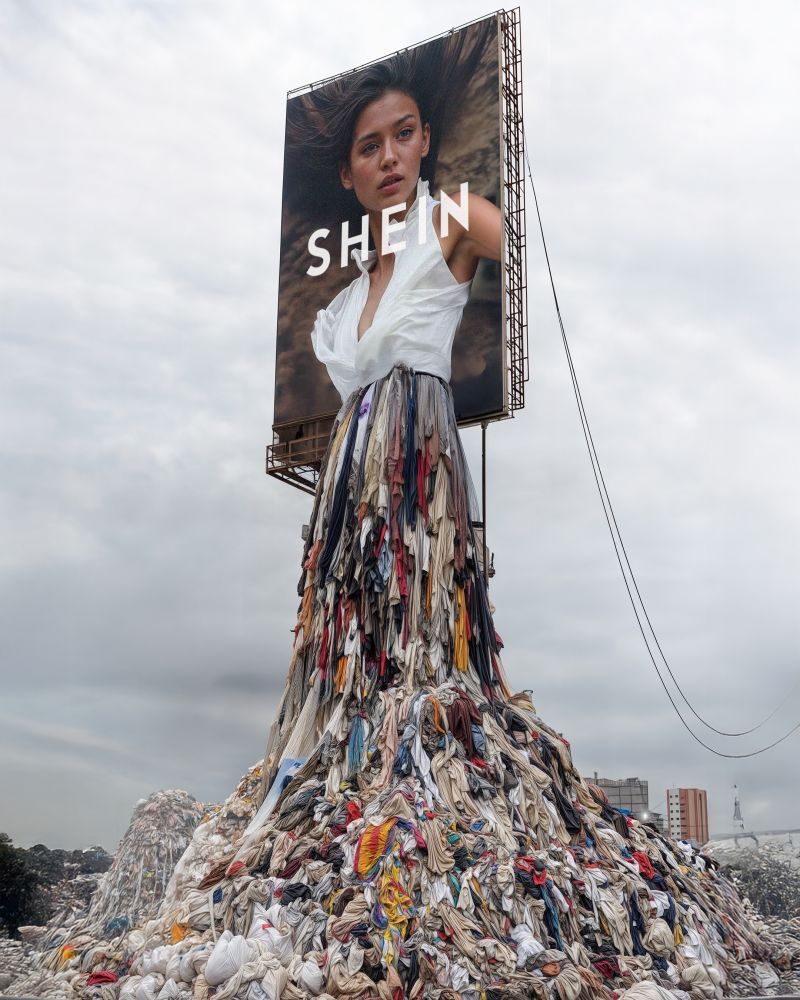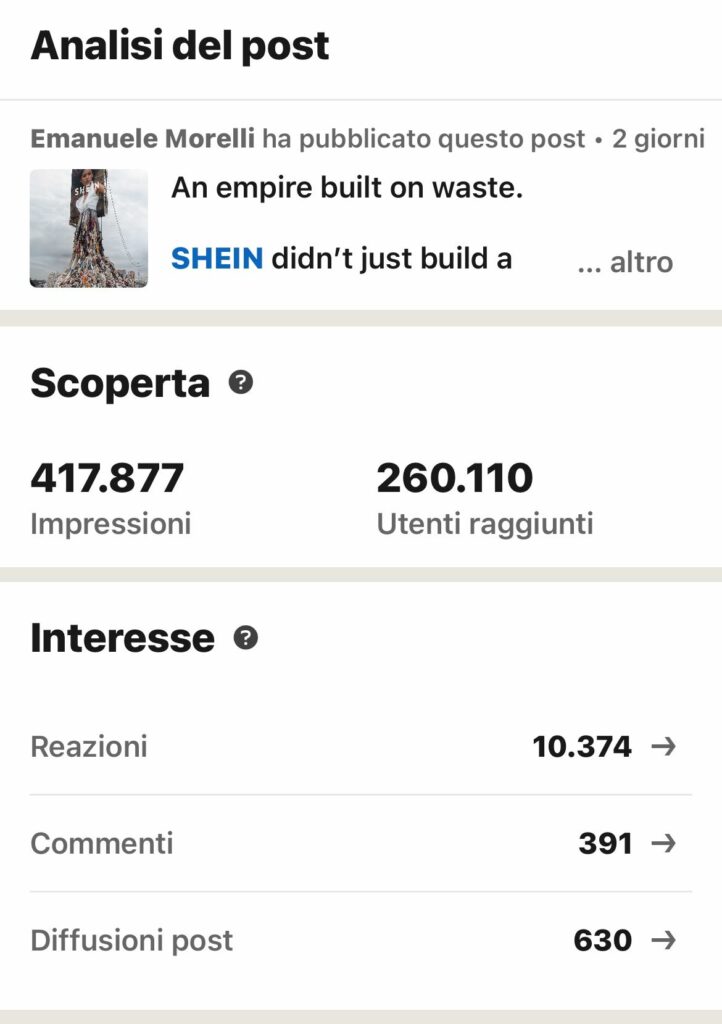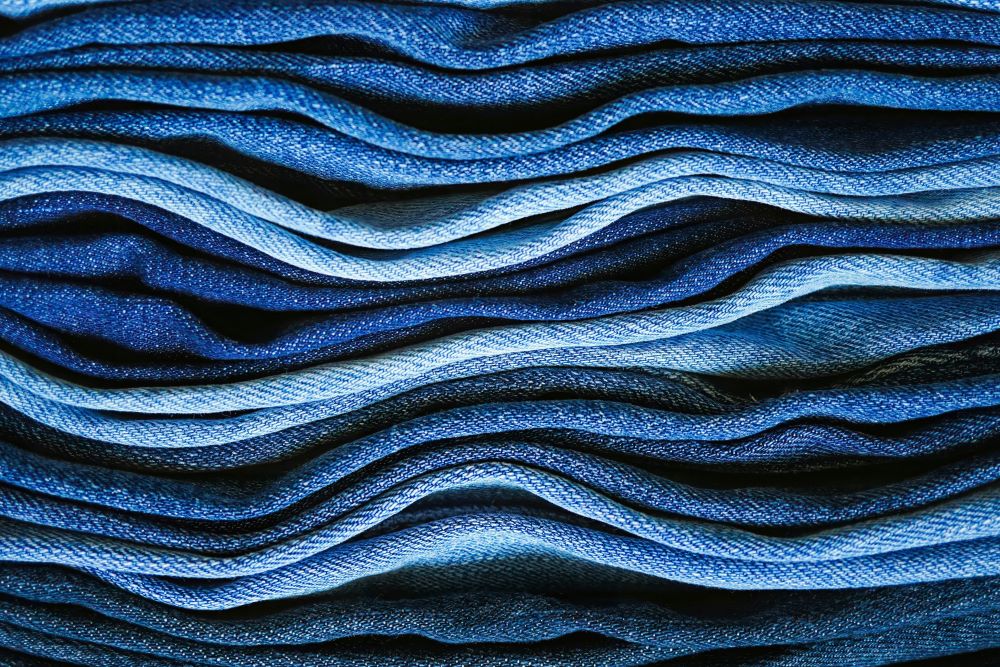In recent days, this image has been circulating widely across social media and featured in numerous news outlets. Created by AI designer Emanuele Morelli, it stands out with striking visual and conceptual force.

This satirical artwork, generated through artificial intelligence, depicts a massive SHEIN billboard standing atop of a mountain of discarded clothing. A powerful tool of environmental communication that raises urgent questions about the fashion industry and how we consume.

Emanuele Morelli accompanies the image with bold words:
An empire built on waste. SHEIN didn’t just build a fashion business, it built a monument of excess, a global empire rising from landfills stitched with synthetic threads and unpaid labor. Each haul, each impulsive swipe, each 2€ top, feeds a mountain. A mountain that doesn’t disappear when the trend does.
This image is not an exaggeration. It’s a mirror. When clothing becomes cheaper than dignity, and faster than ethics, we’re not just buying clothes, we’re investing in collapse. Fast fashion isn’t fashion. It’s a cycle of extraction, production, pollution, and discard, disguised as choice. We can’t keep celebrating empires built on exploitation and calling it innovation. It’s time to rebuild, slower, fairer, cleaner.
Not just a shocking image. The scene is clear and disturbing: a towering fashion model appears elegant, yet her “gown” cascades into an overwhelming heap of textile waste sprawling across a landfill.
SHEIN has become one of the most emblematic examples of this model. In 2023 alone, the brand launched an estimated 1.3 million new designs — an unprecedented figure, especially when compared to traditional retailers who might release a few thousand per year. This extreme pace of production is powered by data-driven design, synthetic materials, cheap labor, and algorithmic supply chains that prioritize speed over sustainability.
Yet this volume comes at a cost. Globally, over 92 million tonnes of textile waste are produced each year, and the fashion industry now accounts for around 10% of global carbon emissions.
What’s cheap at checkout is devastating elsewhere: oceans filled with microfibers, overflowing landfills, and laborers working in unsafe, underpaid conditions.
Emanuele Morelli makes clear that the use of a real brand like SHEIN—clearly accompanied by a disclaimer — is not a personal attack, but a critical lens on a system that values quantity over quality, and speed over substance.
Morelli’s image succeeds because, in his own words, “this image is not an exaggeration. It’s a mirror.” And like any well-placed mirror, it reflects something we’d rather not see — but urgently need to face. The resonance has been immediate and significant. A strong public response confirms not only the visual power of the artwork but also the urgency of the topic it addresses.
This piece also highlights the growing role of artificial intelligence in visual activism. Created with Midjourney, a generative AI tool, the image demonstrates how technology can amplify critical messages in compelling and emotionally resonant ways. Ultimately, Morelli’s AI-generated piece is part of a growing movement in environmental communication that combines art, technology, and provocation to expose the contradictions of our time.

